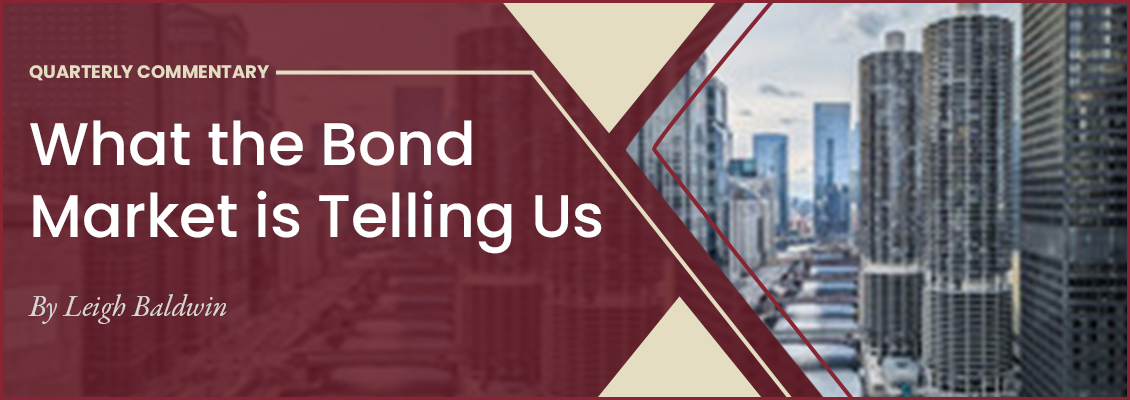The Power of Diversification in a Volatile Market
The first quarter is over for 2025. We started off the year with a positive January (which has historically boded well for the full year) followed by new record highs in mid-February. Then the proverbial wheels fell off, and we just booked the worst quarter for US stocks since 2022. This early action does prove two things, first, markets can go up and down, which is a reminder after two consecutive years of 20% plus growth in the S&P 500. Secondly, in a global economy, money tends to flow to where it is treated best, which again makes the case for portfolio diversification.
Market participants all expected some volatility to begin the year as the new White House Administration charged ahead with their aggressive initiatives. Another thing likely proven then is that equity markets typically do not like uncertainty, and we are now living in Uncertainty Land. For the record, the S&P 500 is down by about 4.6%, the Nasdaq has fallen close to 10% (and is in correction territory), and the venerable Dow is lower by about 1.5%. Tech stocks are now a bit out of fashion.
Quietly, while all eyes remain fixed on US stocks, other markets have done surprisingly well. In fact, the performance divergence between the S&P 500 and international stocks, represented by the EAFE index, may be one of the widest ever as the EAFE is up about 10% year to date. In the background, interest rates are trending lower, and the bond market (US Aggregate index) is up about 2.5%. The recent losses in the more aggressive stock indexes have been somewhat muted by gains in asset classes like international and fixed income. Our final proof then is that a well-diversified portfolio, designed to withstand periods of volatility, can be a potent tool to help investors stay on course with their financial plan.
Looking ahead, the possibility of turmoil and potential trade wars has sparked a transformation of European economies. For example, Germany has initiated over 1 trillion (Euros) in new infrastructure and defense spending and has triggered similar stimulus spreading throughout Europe. This government spending combined with low equity valuations, could be a recipe for money flowing to where it is treated best. We appreciate your continued support and confidence in our firm, and we look forward to discussing the design of your portfolio and how we can help you to achieve your financial goals.
Confidence Sells
There is an adage that says, “confidence sells” and Wall Street is confidently in a sales mode right now. For the record, the S&P 500 closed out the fourth quarter of 2024 with a 20%+ gain, which marks the second straight year of twenty percent gains. This is interesting because it has only happened two other times in the last hundred or so years, 1935 and 1936 (followed by a 39% drop in 1937) and then in the years 1995, 1996, 1997, and 1998 (1999 was very close to being up 20%). Not to be outdone, the tech heavy Nasdaq, led by the magnificent 7, rallied about 30%. In addition, Gold and Bitcoin both made new record highs, small cap stocks bounced, and Apple moved towards a $4 trillion dollar valuation. With 2024 now in the books then, what does the future hold for investors in the year or years to come?
If we look back at the previously mentioned period of the mid-nineties, those incredible gains, year after year, were due in large part to the world transitioning to the internet and a new technology driven society. The question then becomes, with AI obviously the headline in 2024, is this new technology the next big thing. We believe there is more to this story, both good and bad, which could potentially stimulate the economy and financial markets as we head into 2025. We also have a Fed that has dropped interest rates by a percentage point which could be supportive to stocks and bonds. Finally, on the political front there is a sense that we could have less corporate regulation and possibly lower taxes that could help companies meet the consensus of 15% earnings growth.
On the negative side, stock valuations by several standards are looking rich. The threat of a trade war with China, et al could also weigh on the markets, as would a wide variety of other political and economic events. We continue to review and position portfolios to benefit when the markets do well and to withstand those periods of time when the market either pauses to refresh or as can often happen when confidence is high, suddenly and violently revert to the mean. As for confidence, we truly appreciate your confidence in our firm, and we want to wish everyone a healthy and prosperous 2025 and beyond.
What the Bond Market is Telling Us
A solid third quarter for investors, particularly when it comes to equities, was punctuated by a decrease in interest rates by the Fed, with a big one-half percentage point drop. As the economy continues to expand at a surprising rate, along with near record low unemployment, it feels like an elusive “soft landing” may have been achieved. Prominent in this thesis is that inflation has finally been tamed and all systems are green lit to go. But what is the bond market telling us?
Clinton strategist James Carville once said “I used to think that if there was reincarnation, I wanted to come back as the President or the Pope or as a .400 baseball hitter. But now I would want to come back as the bond market. You can intimidate everybody.” Well, the bond market is speaking…since reaching a near-term low in September of about 3.5%, the ten-year interest rate has gone up to over 4.36% on the eve of the 2024 election. As a public service reminder, the Fed controls short term rates while the bond market controls the rates that matter with respect to mortgages and long-term borrowings. Note, the prime rate is 8% prior to the next FOMC meeting on 11-7-24.
One of the key issues, which has been barely spoken about by either political party this election season, is the significant amount of debt in the US and around the world. We can avoid talking about it, kind of like some of your family members, but it is still out there. As a nation, we are currently carrying about $68 trillion in debt, with about $36 trillion of it issued by the US government. If we suppose that at an average of 6%, the debt coverage then translates to about $4 trillion a year. If we follow the bouncing ball, the debt coverage is about 14% of our annual GDP. Ultimately, Inflation may be stickier than expected and our portfolios should reflect this.
Looking ahead and through the fourth quarter, we do expect some volatility that could be muted by solid quarterly earnings and a dovish Fed. The largest tech firms continue to be firmly committed to expanding their AI offerings and could provide equity support. As for interest rates, we are positioning portfolios to benefit from current yields while simultaneously trying to manage the risk of interest rates dancing to their own tune. We look forward to speaking with you as we head towards the end of 2024 and beyond and we thank you for your continued confidence in our firm.
Sticking The Landing
As the Olympics play out in Paris this summer, we can witness extremely gifted athletes excel in a countless number of events. As usual, special attention is given to the high-flying gymnasts that can stick incredible landings. On Wall Street, the most important landing of late is whether the economy can have the elusive “soft-landing” after a stretch of Fed tightening and higher interest rates. With the economy only adding 114,000 jobs in July and the unemployment rate moving up to 4.3% (after bottoming at 3.4% last year), there has been some recent concern for the economy, reflected by a relatively short, but dramatic, sell-off to begin August.
We believe that the soft-landing scenario is still intact as the economy continues to prove to be quite resilient. First, profit reporting from the previous quarter has been strong, with earnings up about 10.9% from a year ago. This gain in earnings appears to be driven by margin expansion as opposed to revenue growth. Also, according to JPMorgan, 8 out of 11 sectors are expected to contribute to this earnings growth, led once again by AI related capex. Finally, the Fed has indicated that they are ready to lower interest rates beginning in September, which has historically given support to equity prices.
On a cautionary note, inflation looks to be rather persistent with several initiatives that could promote higher costs. The deglobalization of industry, bringing manufacturing back home, typically done using aggressive tariffs, may be inflationary. Transforming our energy and infrastructure could also be seen as adding costs for the nation. Inflation is an insidious tax on the middle and lower classes, and there has been some cutting back from consumers. Recent earnings from McDonalds, Starbucks, and Chipotle for example, indicate that people are budgeting more and that may eventually affect the overall economy.
Seven months into the year financial markets continue to stride higher led by the Nasdaq (+16%) and the S&P 500 (+15%). In general, fixed income is positive for the year now, if just barely. As we deal with many geopolitical headlines in the weeks and months to come, it is as important as ever that investors establish a game plan to not only meet and exceed personal goals, but also to manage risk and expectations that can keep the plan on track.
“I don’t really think about the degree of difficulty or the possibility of making a mistake. I just try to relax and let my preparation and training take over.”
— Simone Biles
Should I Roth Or Should I Go Now?
Should I Roth or should I go now? Wall Street is humming a variation to the iconic Clash hit from 1981, as the potential arises that tax law changes made in 2017 get set to expire at the end of 2025. The basic idea is this, should someone consider paying taxes now by converting qualified retirement assets into a Roth IRA, to save a significant sum of taxes over a long period of time. Advisors are having this conversation in offices across the US. In fact, Barron’s recently noted that Fidelity has seen a 44% increase in conversions year over year at just the end of the first quarter. We believe that the pace of conversions will continue to expand, and the following example could help explain why…
For many retirees, the time frame between full retirement age (around 67 years old) until Required Distribution Age of 73, are years with potentially less tax burdens. At 73, the qualified and required distributions can loom large tax wise. That leaves the potential for converting assets before age 73 at least worth considering for many. Combining that with the new rule with respect to non-spouse beneficiary distribution requirements, there is an estate planning angle to this as well. It may not be a “train in vain” to explore the tax implications of converting assets to a Roth.
As for markets during the first third of the year, Wall Street continues to ride the AI wave and generally strong economic data. After a blazing start in the first quarter, stocks have come back to earth recently, in part because of stubborn and sticky inflation. The inflation data is holding the Fed back from lowering rates as Wall Street has reversed course from a predicted seven rate cuts in 2024, to now possibly one or two later in the year. The yield on the two-year just traded above 5% again. We continue to favor companies that are profitable, carry low debt, and that have pricing power. These are the names that could potentially do well during an inflationary period. We are still recognizing good diversification opportunities in international markets.
Finally, we have begun to move out the yield curve as rates have inched higher, but the threat of a massive rise in rates may be less probable. As for the upcoming election (and other geo-political events), the markets seem to be unfazed for now, drawing on experience that investing based on headlines can be an expensive political science course. We look forward to connecting with everyone personally throughout the year and we appreciate your confidence in our firm.
New Year, New Weather
Every New Year begins with resolutions, future predictions and forecasts, and a clean slate. As investors, we try to be aware of the daily gyrations of both the economy and the markets, as well as long-term trends. By comparison, a good meteorologist reports on the weather today and for the next five days. A great meteorologist is looking not only at what is currently happening, but also studying major potential trends, like climate change, and making decisions based on a long-term view. To be a great investor then, we believe that you need to combine the fundamental analysis of all current and historical data, with the curiosity and experience to make enduring, multi-year decisions, with a grounded anticipation of the future.
Thanks to our friends at Wealthmanagement.com, we need to be cautious with what the financial media offers in the way of predictions. Based on a study by CXO Advisory Group, the so-called gurus were no better than a flip of the coin, they were worse. From 2005 to 2012, they reviewed 6,584 forecasts from 68 “experts” only to find that on average they were accurate less than 47% of the time. Only 5 of the 68 had an accuracy score above 60%. And no, Jim Cramer was not one of the five (he came in at 47%). Our key takeaways are these…First, any market related predictions for the short term are purely for entertainment purposes only. Secondly, we need to make calculated forecasts for our long-term investments, but we also need to build portfolios using concepts like diversity, income investments, risk management, etc. so that we can survive the short-term periods of market volatility that the breathless “talking heads” cannot seemingly get right.
With that said, here is some of our insight as we head directly into 2024. Stocks managed to rebound quite nicely in 2023 and in mid-January 2024, the S&P 500 was able to regain all-time highs from 2 years ago. Even with relatively high US stock valuations, we believe that the economy is strong, strong enough to have a soft landing from recent rate hikes, and that the path of least resistance for equities may be higher for now. During the last quarter of 2023, the 10-year bond (risk free rate of return) had a dramatic fall in rate from a bit over 5% to 3.8%. As we closed out the year, the Fed appeared to be done lifting rates for the time being. While there will most likely be some rate cut by the Fed in 2024, we think just the “idea” of Fed cuts, will give some ballast to both bonds and stocks this year. As for volatility, world events and the upcoming election will most likely cause some market reactions. We again remind investors that Wall Street sometimes reacts counter to what the endless headlines might suggest.
We look forward to working with everyone again this year and for many years to come. Our goal is to become a trusted financial planning and asset management partner that not only guides you, but also helps to manage against those things we cannot control. “Climate is what we expect, weather is what we get” Mark Twain. Thank you for your continued confidence in our firm.










